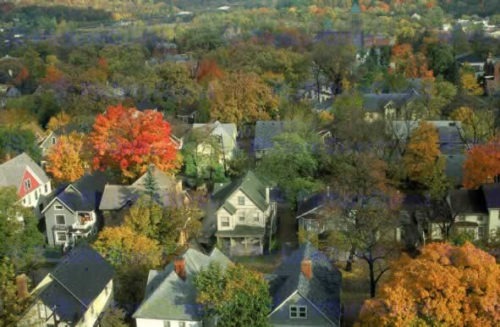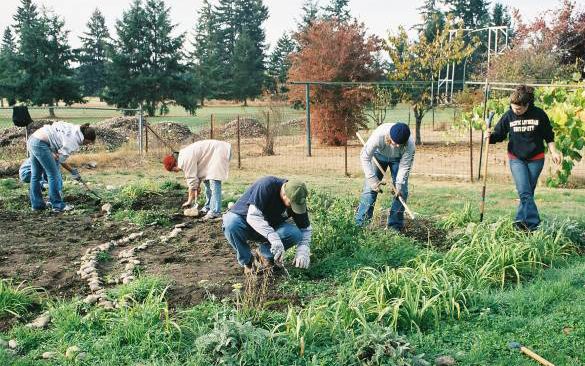Note from the Editor: This is the third in a series of posts on dystopian entertainment, eschatology, and the state of the church.
The Great Barrier Reef
A few months ago, an online news article quickly went viral with its title Obituary: Great Barrier Reef (25 Million BC – 2016). Though not yet factual, it definitely caused consternation and raised awareness of the endangered state of the Great Barrier Reef.
This immediately reminded me of renowned consultant Alan Roxburgh’s book Missional: Joining God in the Neighborhood. In the opening chapter, he recounts of a majestic experience of snorkeling in the Great Barrier Reef only to learn later from his marine biologist friend that within a generation it will all be gone. Unfortunately, according to his friend, the pollution damage is irreversible. Notwithstanding, it was hard for Roxburgh to come to grips with this, because he had been swimming in the reef and had seen it teeming with life.
chapter, he recounts of a majestic experience of snorkeling in the Great Barrier Reef only to learn later from his marine biologist friend that within a generation it will all be gone. Unfortunately, according to his friend, the pollution damage is irreversible. Notwithstanding, it was hard for Roxburgh to come to grips with this, because he had been swimming in the reef and had seen it teeming with life.
This made Roxburgh reflect about the current predicament facing the “Eurotribal” churches in the West and their various forms (seeker-sensitive, megachurches, and so on). Within just a generation, it can all be gone. Poof. Added to the extinction list.
Consequently, Roxburgh suggests that in lieu of wasting so much energy on church-centric questions that seek strategic, pragmatic solutions with the goal of keeping and getting more people in the doors, instead we should come alongside God’s mission in the neighborhood. We need to be asking more missional questions than ecclesial.
Like the Great Barrier Reef, there is much at stake when anything is endangered. Are various forms of church endangered, as Roxburgh suggested? Is the gospel endangered, as John C. Nugent suggests in his book, Endangered Gospel: How Fixing the World is Killing the Church. ? Regardless, if indeed our hopes are misplaced and the story we are telling is wrong, then both the gospel and church are in danger.
Shark Tank: Everyone Has a Cause
Moving downstream to shark-infested waters, consider the ABC show Shark Tank. The premise is that entrepreneurs have one shot to pitch their company before a few millionaire/billionaire “sharks” in hopes that one of the them will be lured into taking the bait and investing in the entrepreneur’s business. In one episode a millennial was emphasizing his company’s social cause, when Mark Cuban interrupted and remarked, “Yeah, but everyone has a cause.”
Cuban noted that almost every company nowadays has a great cause or effort they are trying to work towards, reduce, or eradicate. In other words, he was highlighting the popularity of world betterment. As we saw in the previous posts, Christians used to attempt to get people to escape this world (heaven-centered view), but now we try to save the world (human-centered view) or do our best until God eventually saves it (world-centered view).
Why Fixing the World is Killing the Church
In the podcast Crackers and Grapejuice: Talking Faith Without Stained Glass Language, UMC pastor Jason Micheli interviewed Nugent about his book; toward the end, he posed a really interesting observation. He says,
During the Enlightenment, Christianity legitimated itself by trying to demonstrate how it is reasonable. In the 20th century or even earlier, maybe, we tried to legitimate Christianity by showing that it was useful, so ministry became one of the helping professions. I’m wondering if the emphasis on social justice, now, is a way of justifying our existence to a world that doesn’t believe what we believe (26:10-26:37)? [1]
Nugent agrees with Micheli’s question. Saving or fixing the world, and our involvement in that endeavor, is extremely popular right now.
We sing it.
We read it.
We watch it.
It’s the story that everyone wants to tell.
Yet is it the story that God wants us to tell?
Don’t think that Nugent’s argument is against fixing the world, or railing against those who do so. Not at all. What we see in Scripture validates this desire. God wants the world to be a better place, too, and one day God will restore it; however, Nugent argues that that is a task ultimately reserved for the powers/rulers and authorities (presently) and God (future). The unique vocation that God has called his people to do, however, is different.
Stained Glass Windows
The origins of stained glass windows are fascinating. Stained glass windows were created for the purpose of visually depicting the story of the Bible for the mostly illiterate onlookers. Functionally, the reflections of the stained glass windows shined out into the streets. The beautiful artistic representations helped those outside the church get a glimpse of the overarching story and its main characters within.
A few years ago I was in a church with gorgeous stained glass windows showcasing Christ and the Gospel. Upon further inspection, though, I noticed that—whether by ignorance, mistake, or design—the light from the windows didn’t reflect the story of Christ out into the world.
“What kind of message is that sending?” I thought to myself.
Later it dawned on me that in a culture in which Christendom is (slowly) fading, it’s just as important, if not more, that the light of the Gospel penetrates into the soul of the Body of Christ. If the love, light, and life of Christ does not saturate the gathered body, then what exactly is the church witnessing to, and why would it invite others to join into the new humanity created by Jesus if, in the end, it’s no different from the old world order and structures?
Reinvesting in the Church
In the last section of his book, Nugent highlights what the better place looks like in action by examining discipleship, leadership, fellowship, family relationships, friendship, vocation, missions, and witness to the powers. At the conclusion, Nugent warns of two potential pitfalls with this kingdom-centered vision of the church as the better place: isolationism (insularity leading to complete withdrawal from the world) and utopianism (naively attempting to create an ideal society). Both are to be avoided if a church is to fully embrace, display and proclaim the kingdom.
The appendix provides some great questions divided into four topics: struggling with your church, helping those outside the church, taking social justice seriously, and striving to remain faithful. We’ll look at one question and answer from each section to conclude this post and series.
Struggling with Your Church
I’m going to combine two practical questions in this section:
I am part of a progressive church that wants to save this world or I am a part of an inwardly focused church that mostly ignores the outer world. How is a kingdom-centered approach good news for my church?
For the progressive church, the good news of a kingdom-centered approach is that the world doesn’t need you to save it, and you will continually fail because the church wasn’t designed with that purpose in mind. Therefore, take rest that you no longer have to bear the burden of exhaustion! Since God has already begun saving the world by creating a new one (the church), you can now get on with the task of embracing, displaying, and proclaiming the kingdom and new world order made possible in Jesus. [2]
For the inwardly focused church, the good news of a kingdom-centered approach is that you can still “become the body of Christ” because a church that exists only for itself and does not engage in God’s mission is not a church at all. So you can “rethink your approach to the world” by asking questions such as, “How can we as a church body creatively show our community what God’s kingdom is like?”[3]
Helping Those Outside the Church
Is God at work in nonbelievers who make this world a better place by feeding the hungry, healing the sick, and welcoming strangers?
One of the points that Nugent belabors is that God is at work outside of the Church, too, including nonbelievers and political powers. Nevertheless, “[w]e must not assume, however, that just because God is doing something we should get in on the action. We are stewards of the gospel. Whether we like it or not, worldly powers rule the nations, not us.”[4]
Taking Social Justice Seriously
What about human rights? Should Christians seek to make sure people’s rights are properly protected and respected?
Without a doubt, the church should be concerned about the dignity of all people, but the church should be different in that it is the place primarily where justice and dignity are displayed. Our witness, therefore, will look different determining on how the wider society views biblical justice either accepting or rejecting it. [5]
Striving to Remain Faithful
How do we sustain a kingdom-centered church life?
Sustainability happens through regular gospel proclamation, big picture metanarratival (re)telling, and the congregation regularly soaking itself in Scripture and the kingdom-vision set forth by Jesus. Additionally, fervent love among believers is vital, along with fraternal admonition and repentance. Finally, a robust vision of the priesthood of all believers is crucial for kingdom-centered perseverance. [6]
What do you think of the kingdom-centered vision of the better place? Does your church embrace, display, and proclaim the kingdom of God? Does it function like an embassy of the kingdom of heaven?
[1] Crackers and Grapejuice: Talking Faith Without Stained Glass Language, episode 33, 26:10-26:37.
[2] Kindle Location 3650
[3]Kindle Location 3674
[4] Kindle Locations 3765-3767
[5] Kindle Location 3844
[6] Kindle Locations 3901-3932




 chapter, he recounts of a majestic experience of snorkeling in the Great Barrier Reef only to learn later from his marine biologist friend that within a generation it will all be gone. Unfortunately, according to his friend, the pollution damage is irreversible. Notwithstanding, it was hard for Roxburgh to come to grips with this, because he had been swimming in the reef and had seen it teeming with life.
chapter, he recounts of a majestic experience of snorkeling in the Great Barrier Reef only to learn later from his marine biologist friend that within a generation it will all be gone. Unfortunately, according to his friend, the pollution damage is irreversible. Notwithstanding, it was hard for Roxburgh to come to grips with this, because he had been swimming in the reef and had seen it teeming with life.
 As seen in
As seen in 





 Upon arriving in Japan, Father Rodrigues and Garupe realize that the persecution against Christians is much more severe than they had ever imagined. Yet, this will not stop our hero(es). The tandem duo is surreptitiously brought into a village full of Christians to whom they immediately minister in secret. At this point, we begin to notice that their mission—to recover or disprove the alleged news regarding Ferreira—is slightly modified and expanded: to tend to a desperate flock. To be sure, much is to be commended for their care amongst the despairing congregation; however, once the heat turns up, and the antagonist, The Inquisitor, discovers subversive Christian life in this village, a realization begins to surface: our hero’s quest has become extremely complicated and convoluted, and he has some cracks in his armor.
Upon arriving in Japan, Father Rodrigues and Garupe realize that the persecution against Christians is much more severe than they had ever imagined. Yet, this will not stop our hero(es). The tandem duo is surreptitiously brought into a village full of Christians to whom they immediately minister in secret. At this point, we begin to notice that their mission—to recover or disprove the alleged news regarding Ferreira—is slightly modified and expanded: to tend to a desperate flock. To be sure, much is to be commended for their care amongst the despairing congregation; however, once the heat turns up, and the antagonist, The Inquisitor, discovers subversive Christian life in this village, a realization begins to surface: our hero’s quest has become extremely complicated and convoluted, and he has some cracks in his armor. A contemporary example might help us to understand. In the recent TV show The Man in the High Castle, there is an entire episode in which Nobusuke Tagomi (Trade Minister of the Pacific States) repairs a broken white coffee mug. We’d probably expect him to use some sort of white lacquer to distract any attention from previous cracks; however, he doesn’t do that. Instead, Tagomi uses what looks like a gold lacquer to highlight the imperfections (which is very wabi-sabi of Tagomi).
A contemporary example might help us to understand. In the recent TV show The Man in the High Castle, there is an entire episode in which Nobusuke Tagomi (Trade Minister of the Pacific States) repairs a broken white coffee mug. We’d probably expect him to use some sort of white lacquer to distract any attention from previous cracks; however, he doesn’t do that. Instead, Tagomi uses what looks like a gold lacquer to highlight the imperfections (which is very wabi-sabi of Tagomi).



 helicopter to fly to the various places they frequent. This lifestyle is characterized by multiple disconnected relationships, multiple personalities (for each individual), rootlessness, and restlessness.
helicopter to fly to the various places they frequent. This lifestyle is characterized by multiple disconnected relationships, multiple personalities (for each individual), rootlessness, and restlessness. More could be said, but one of the best launching pads is to fill out a
More could be said, but one of the best launching pads is to fill out a  new life, we must learn to slow down and observe the rhythms and patterns of the land (neighborhood), tending and tilling the soil, and willing to stay put. One of the most subversive, counter-cultural things Christians can do in these times is to stay put in one place for 30-40 years (which happens to coincide nicely with a mortgage). In doing so, we may begin to minister and regain trust that has been lost. We will be able to actually show people the way of Christ (instead of just talking about it). Maybe we, ourselves, will actually take root and flourish? If we are in it for the long haul like farmers, one sister may plant, another brother may water, but in the end we’ll be reminded that only God causes the growth (1 Corinthians 2).
new life, we must learn to slow down and observe the rhythms and patterns of the land (neighborhood), tending and tilling the soil, and willing to stay put. One of the most subversive, counter-cultural things Christians can do in these times is to stay put in one place for 30-40 years (which happens to coincide nicely with a mortgage). In doing so, we may begin to minister and regain trust that has been lost. We will be able to actually show people the way of Christ (instead of just talking about it). Maybe we, ourselves, will actually take root and flourish? If we are in it for the long haul like farmers, one sister may plant, another brother may water, but in the end we’ll be reminded that only God causes the growth (1 Corinthians 2).